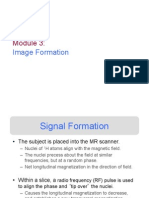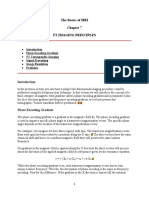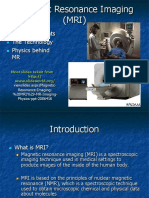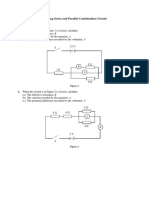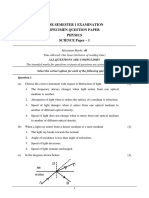0% found this document useful (0 votes)
77 views43 pagesTMCC MRI Image Formation
MRI uses hydrogen atoms and their spin properties to form images. A slice is selected using gradient magnetic fields, then the spins within the slice are excited with radiofrequency pulses. Phase and frequency encoding gradients are applied to spatially encode the excited spins. This spatial encoding data is stored in k-space. A Fourier transform converts the k-space data into pixels that form a 2D image. Understanding these physical principles is important for clinical applications like sequence planning and troubleshooting poor images.
Uploaded by
Dipendra SahCopyright
© © All Rights Reserved
We take content rights seriously. If you suspect this is your content, claim it here.
Available Formats
Download as PDF, TXT or read online on Scribd
0% found this document useful (0 votes)
77 views43 pagesTMCC MRI Image Formation
MRI uses hydrogen atoms and their spin properties to form images. A slice is selected using gradient magnetic fields, then the spins within the slice are excited with radiofrequency pulses. Phase and frequency encoding gradients are applied to spatially encode the excited spins. This spatial encoding data is stored in k-space. A Fourier transform converts the k-space data into pixels that form a 2D image. Understanding these physical principles is important for clinical applications like sequence planning and troubleshooting poor images.
Uploaded by
Dipendra SahCopyright
© © All Rights Reserved
We take content rights seriously. If you suspect this is your content, claim it here.
Available Formats
Download as PDF, TXT or read online on Scribd
/ 43































